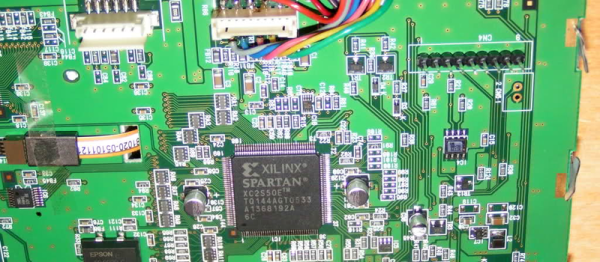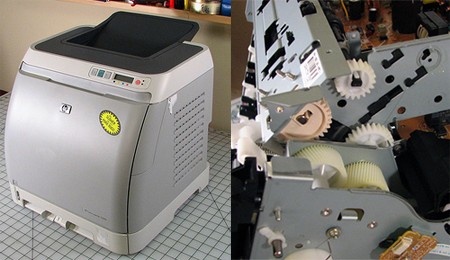These days, if you want to start learning about FPGAs, it can be a daunting experience. There’s a huge variety of different platforms and devboards and it can be difficult to know where to start. [RoGeorge] decided to take a different tack. Like a 16-year-old drag racer, he decided to run what he brung – a printer control panel cum FPGA development board (Romanian, get your Google Translate on).
[RoGeorge] was lucky enough to score a couple of seemingly defective control panels from HP Laserjets discarded by his workplace. Seeing potentially good parts going to waste, like keypads and LCDs, he decided to investigate them further – finding a 50,000 gate Xilinx Spartan IIE running the show. Never one to say no to opportunity, [RoGeorge] dived in to learning how to work with FPGAs.
The forum posts are a great crash course in working with this sort of embedded FPGA platform. [RoGeorge] covers initial mapping of the peripherals on the board & finding a JTAG connector and programming solution, before moving on to basic FPGA programming and even covers the differences between sequential programming on microcontrollers and the parallel operation of FPGAs. Even if you don’t intend to get down and dirty with the technology, spend half an hour reading these posts and you’ll be far more knowledgeable about how they work!
In the end, [RoGeorge] showed how to teach yourself to work with FPGAs for the price of a couple of programming cables – not a mean feat by any means. It’s a testament to the hacker spirit, and reminds us of [SpriteTM]’s efforts in hacking hard drive controllers.















